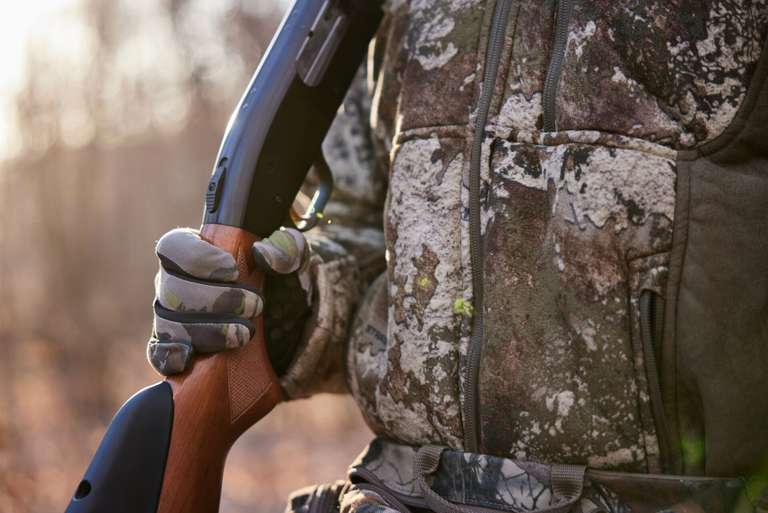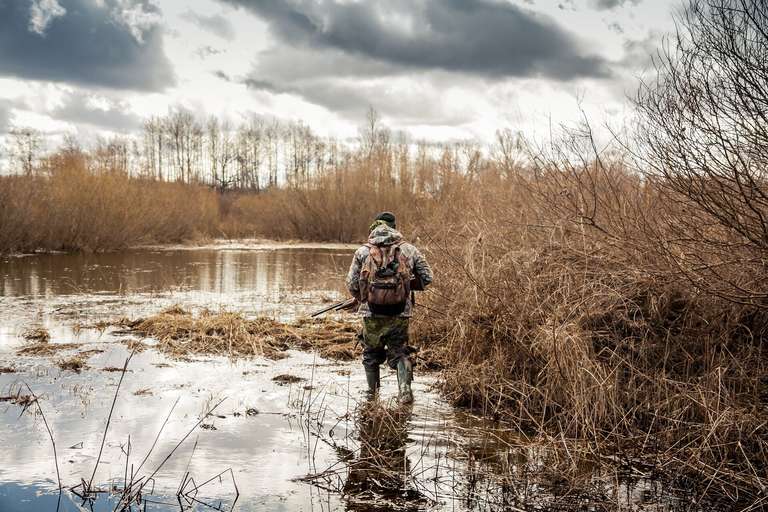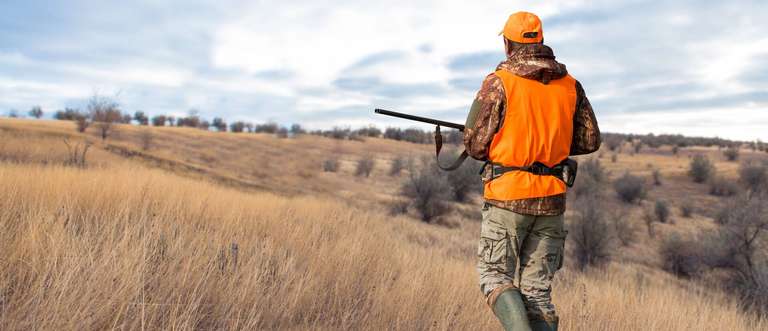What Does It Mean to Nock an Arrow?
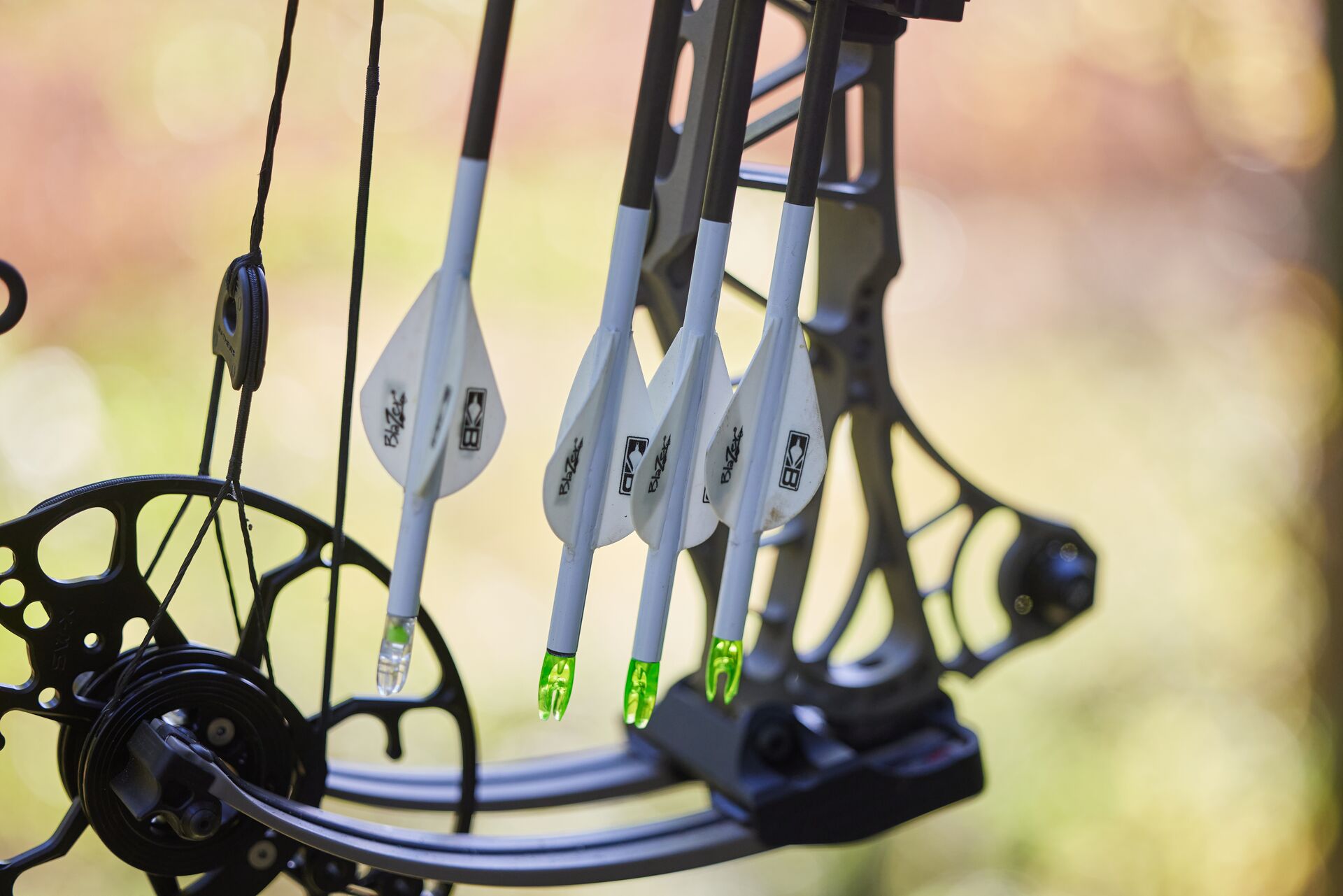
As an aspiring bowhunter, you’ve probably heard the words “nock an arrow” frequently used, but what does the phrase actually mean?
Arrow nocks and their role in connecting the arrow to the bowstring are fundamental in archery and bowhunting. Understanding nocks is essential for accuracy, proper technique, and ensuring safety on a hunt.
In this resource, we’ll take a closer look at the nocking process and help you build a solid foundation for your bowhunting journey.
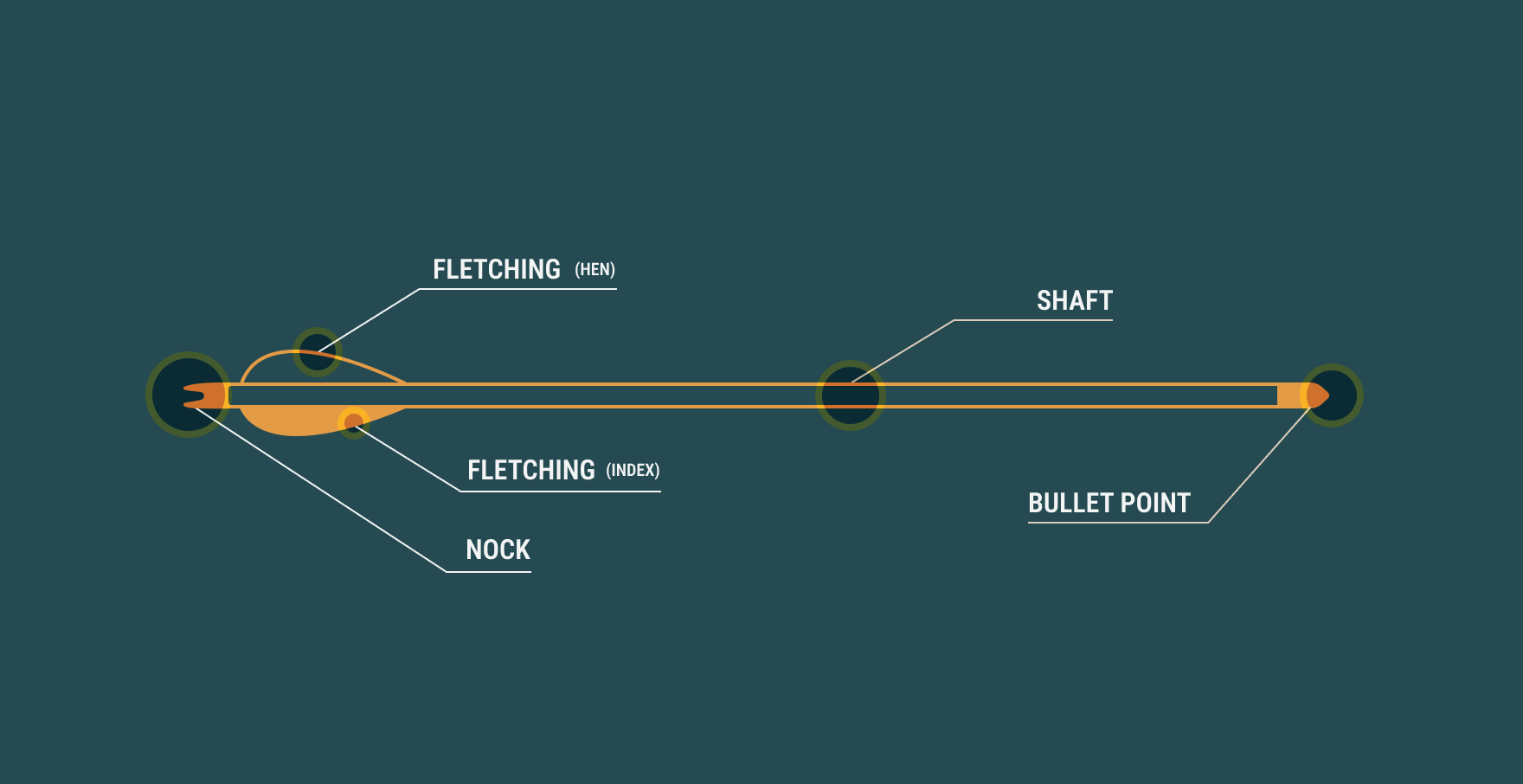
Understanding the Terminology
The nock of an arrow is what connects the arrow to the bowstring. The nock is typically made of plastic and has a notch that connects to the bow string. When the string is released from the full draw, its energy is transferred through the nock to the arrow shaft.
The nock connects to the string on the nocking point, an indicator that marks where the nock should be clipped on the string. Nocking points can be a metal ring, plastic, or string (called serving) wrapped around the bowstring.
“Nocking an arrow” refers to the process of connecting the arrow nock to the bowstring as you prepare to shoot.
The Importance of Proper Nocking
While putting an arrow on a string doesn’t seem like a big deal, it’s a critical part of archery for several reasons:
- Nocking ensures the arrow is securely attached to the string as it is pulled back.
- Proper nocking and nock grip on the string helps transfer the bow’s energy to the arrow.
- Correctly sized nocks reduce the risk of the arrow falling off the string prematurely or sticking to the string after the shot.
In short, nocking an arrow sets your foundation for a successful and accurate shot.
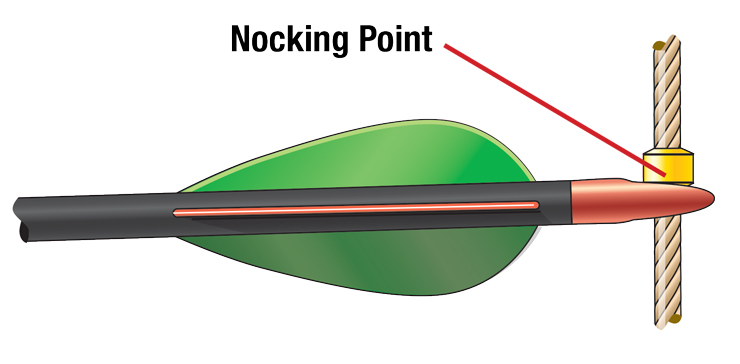
A Step-by-Step Nocking Process
Now that you have a better understanding of the importance of properly nocking an arrow, let’s take a closer look at the process:
- While holding the bow in your non-dominant hand, use your dominant hand to place the side of the arrow shaft on the arrow rest or shelf on the bow.
- Grasp the arrow near the nock with your dominant hand.
- To avoid clearance issues, make sure the nock is indexed correctly on the string. The off-colored fletching should point away from the riser.
- Push the nock onto the bowstring at the designated nocking point. You should feel or hear a click as the nock snaps onto the string.
These four steps are simple but not always easy for new bowhunters. Arrows sometimes have a mind of their own, and it can take a bit of practice to nock an arrow smoothly in a stressful situation like a hunt.
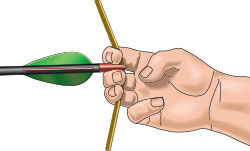
Common Nocking Points and Types
The connection between the arrow and the bowstring relies on a good fit between the nocking point and the nock.
The nocking point is a marker on the bowstring that indicates where the nock should be placed. Nocking points are often made with serving or metal rings attached to the bowstring. If there is just one nocking point, the arrow’s nock will be placed beneath it. If there are two nocking points, the nock is placed between both points.
Nocks come in a variety of shapes and sizes.
- Press-fit nocks are commonly used in carbon arrows, with the nock’s post sliding into the arrow shaft.
- Overnocks fit over the top of the shaft and are glued on.
- Some arrows have snap-on nocks that click into place on the string, while others have pin nocks for better alignment.
- Competition archers often prefer to use pin nocks. Pin nocks are smaller nocks that fit on an aluminum pin located at the arrow’s nock end. Bushings in the pin help protect expensive target arrows from being damaged by other arrows when you’re shooting tight groups.
Even nocks of the same design and size may have different groove sizes.
The nock groove is the opening between the nock ears or posts. Small grooves are for thinner bowstrings like those found on low draw-weight recurve bows. Large groove nocks are for compounds and heavier, draw-weight traditional bows with thicker strings.
Potential Mistakes to Avoid When Nocking
As basic as nocking an arrow might seem, a couple of common errors tend to frustrate even the most experienced archer.
These include:
- Improperly Fitted Nock: Nocks need to be “indexed” or correctly aligned with the vanes on the arrow. If they are not, the vanes can hit the arrow rest and throw the arrow off course.
- Incorrect Nock Groove Size: Most modern nocks will click when completely pushed onto the bow string. If the nock groove is too large, the nock won’t click, and the arrow will want to fall off the string. If the nock groove is too small, the nock won’t be fully seated, and the arrow may come off the string too early.
- Incorrect Nock Placement: Nocking points can shift over time, placing your nock too low or too high on the string. This can throw off your accuracy and possibly cause damage to the arrow or bow.
Always inspect your nocking point before each practice session and quickly check each nock for damage or looseness before shooting it. Hard impacts with the target or other arrows can crack or loosen nocks.
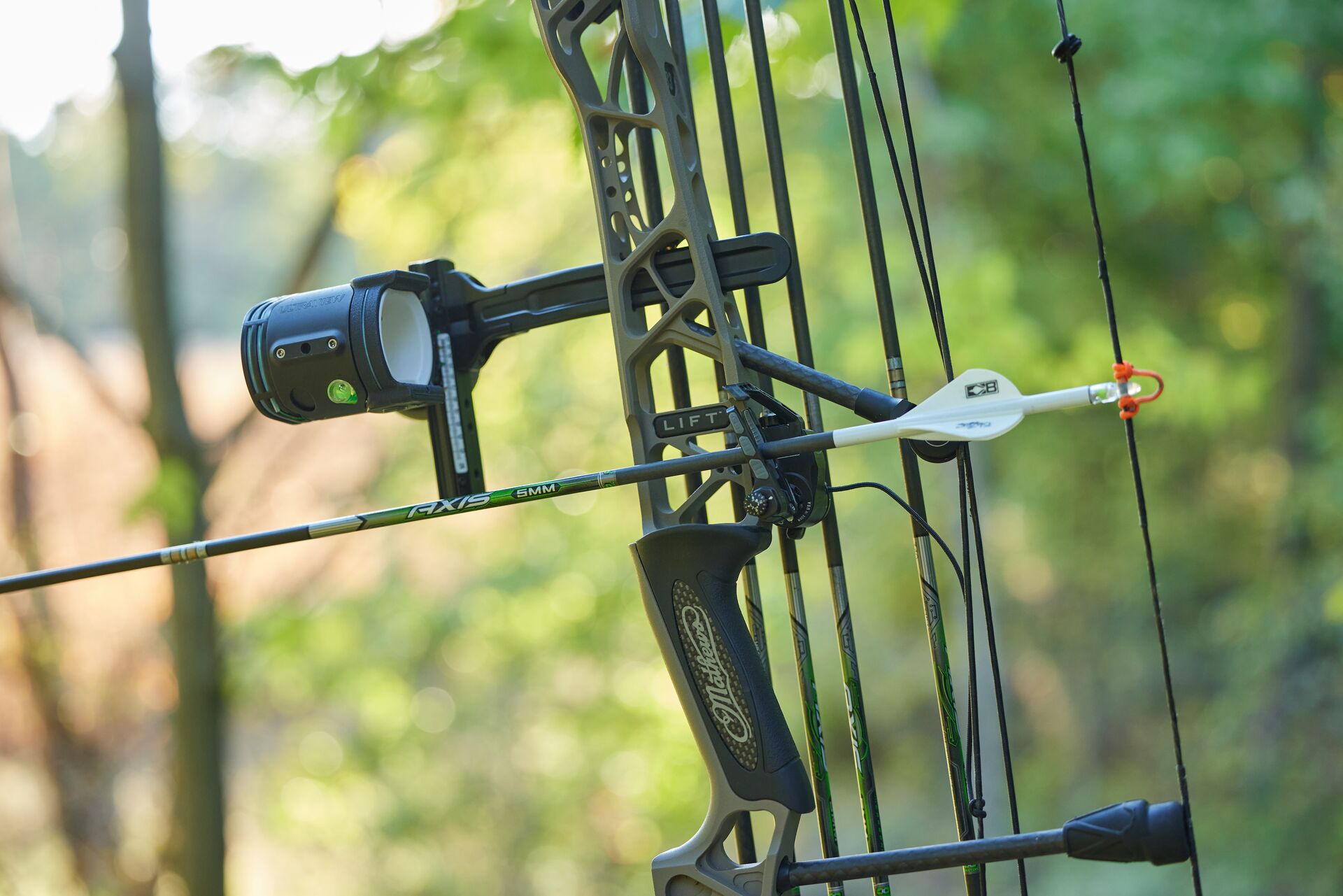
Nocking Techniques for Different Shooting Styles
Target and competitive archers require precisely fit nocks and nocking points to minimize variables for consistent accuracy.
While bowhunters also require precision, they also need a fast, smooth nocking process for taking quick shots. Speed becomes even more critical if a second shot is required.
Regardless of your shooting style, nocking an arrow should be a conscious and well-trained part of your shooting process.
How to Fine-Tune Your Nocking Skills
Improving your nocking skills can be done at home and at the range. Your ultimate goal is to be able to rapidly nock an arrow without looking.
To fine-tune your skills:
- At Home: Practice nocking your arrow from your bow, hip, or back quiver. Find a repeatable spot to grip the arrow and how you will maneuver the nock onto the nocking point.
- At the Range: In addition to practicing your nocking process, create a habit of “reloading,” or nocking another arrow, after each shot. This will help build muscle memory so you can be ready for a fast second shot.
And, of course, always prioritize safety when using your bow during practice or a hunt. Check for cracked or loose nocks, loose nocking points, frayed bowstrings, cracked or twisted bow limbs, and that all mechanical parts move correctly.
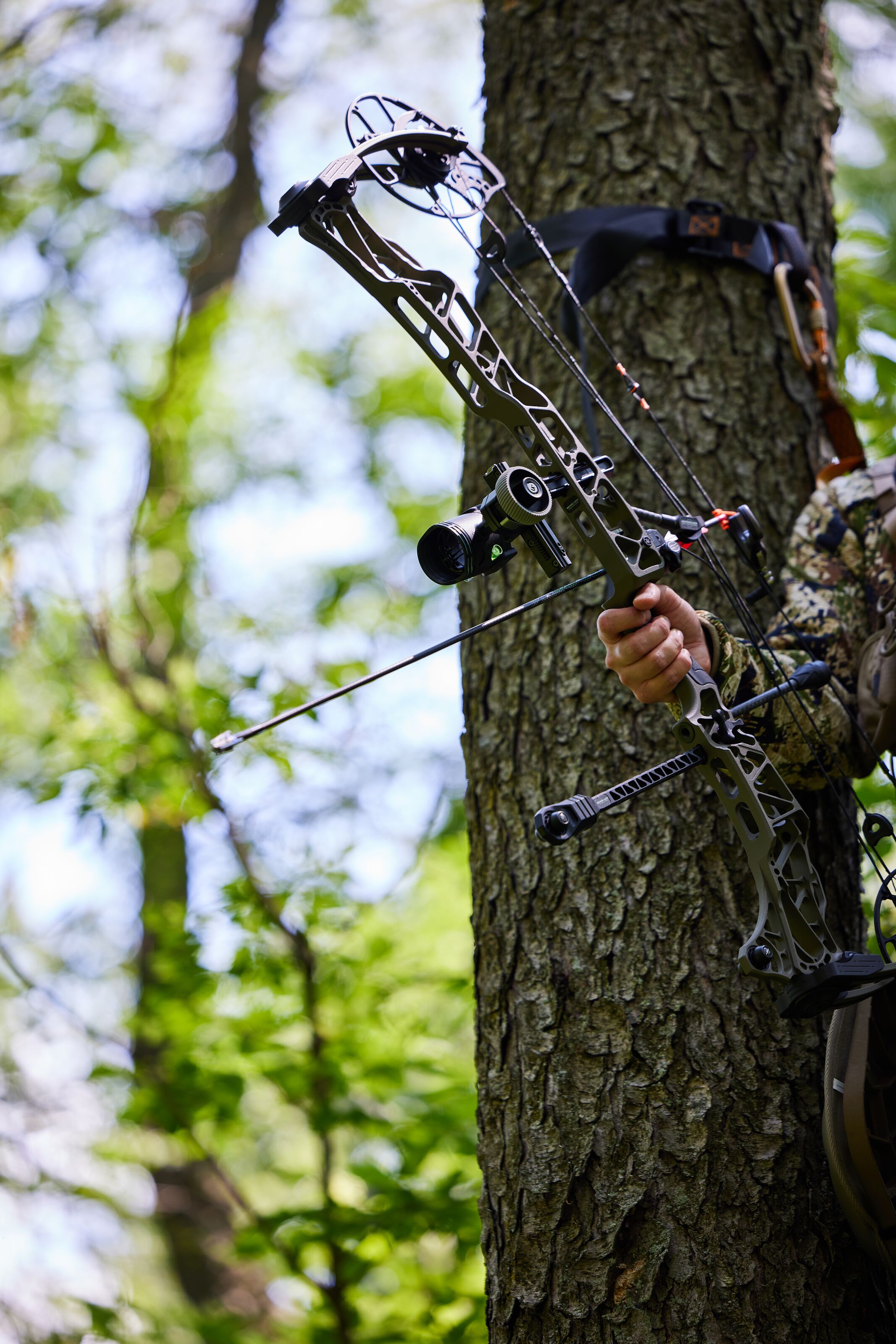
Learn How to Nock an Arrow Like a Pro for Bowhunting Success
Properly connecting your arrow to the bowstring is a fundamental skill for every archer and bowhunter. Nocking an arrow is often the first crucial step of a shot process. It is the foundation for every step that comes after it, from drawing to release to follow-through.
Consistent practice with proper technique is always the key to improvement!
In addition to learning how to nock an arrow, hunters must also learn how to stay safe in the field. One of the best ways to do this is by taking an online hunter education course through ilearntohunt.
Our state-specific and approved courses explore topics such as hunter safety tips, hunting techniques, wildlife identification, first aid, and more! So, before heading out into the field with your bow for your next hunt, choose the course for your state and start learning. Our gamified format makes it fun!

